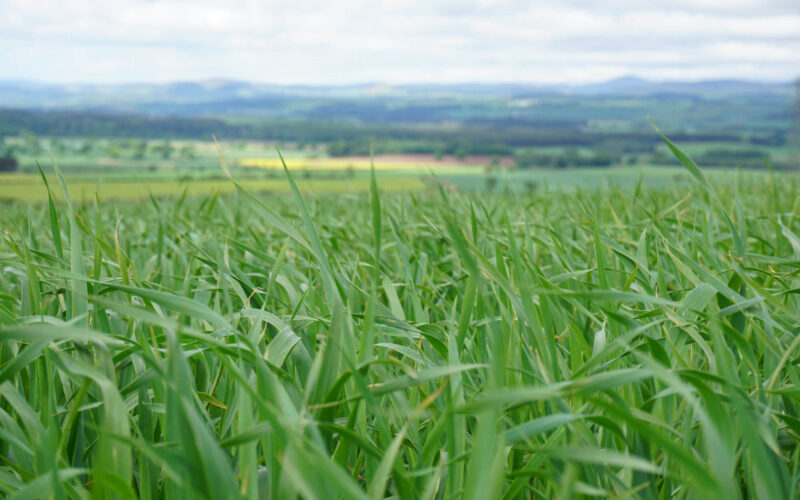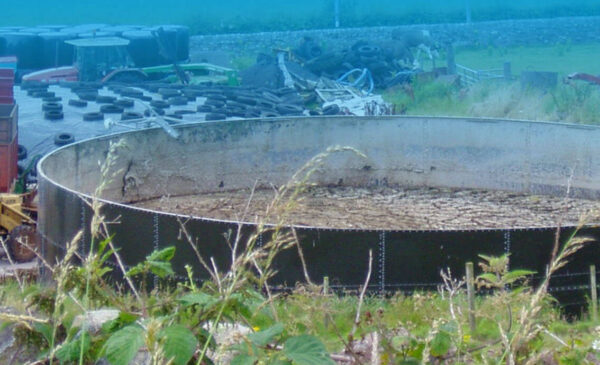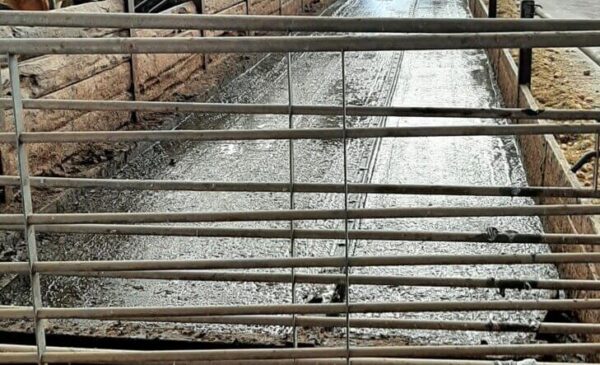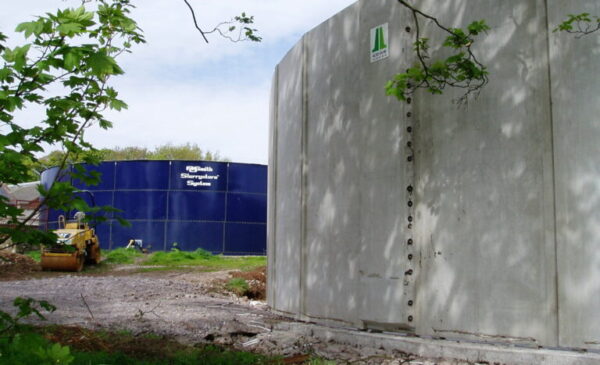Nutrient budgeting is an ongoing process to manage nutrient applications based on soil requirements, organic inputs and crop demand. Regular soil analysis every three to five years, is required to ensure that you understand nutrient and soil pH values in your soils and can plan fertiliser needs accordingly, this includes accounting for nutrients in slurry and manures and the topping up with inorganic fertiliser applications.
Further information
- See the Farming for a Better Climate introductory guide to nutrient budgeting and guide to getting started.
- Read how to optimise nutrient value in livestock manures and slurries in Technical Note 736.
- Download a free nutrient budgeting tool.
- Watch the FAS video explaining how to calculate the nutrient value of organic fertilisers.
Slurry and manure can provide a valuable supply of plant nutrients such as nitrogen (N) and phosphorus (P). To make sure this source of plant nutrients is used efficiently, it’s important to take account of the specific crop’s requirement for the nutrient through a nutrient management plan.
The regulations, which apply throughout Scotland require that fertilisers must not be applied to land:
- in such amounts that the crop requirement for nitrogen is exceeded;
- in excess of the amount required to maintain the soil phosphorus status at acceptable agronomic levels
When applying fertilisers with relatively high levels of available N such as slurry, account must be taken of the need of the crop for nitrogen at the time of application. Applying readily available N outside the growing season at a time when there is low crop demand will greatly increase the risk of losing N to the air and water. In practice this may mean applying the crops total requirement for N in split dressings to better match the supply of N with crop demand.
Depending on the individual crop, there is generally adequate residual N within the soil to support crop growth over the autumn and winter. In Scotland, agronomic advice is that autumn application of N is generally not recommended to winter cereals and applications of N to grass are not recommended after mid-August.
Regarding fertilisers such as cattle FYM, which contain phosphate and would be expected to be low in available N, while it is still vital to take account of crop nutrient requirement to avoid over application, the specific timing of application is less important compared to fertilisers containing high available N. This is because P behaves differently to N in mineral soils. Mineral soils in the low or moderate P status category, providing other factors such as pH are satisfactory, can bind and hold P to a greater or lesser extent depending on the P sorption capacity.
Preparing and using a nutrient management plan will ensure that the soil P Status is not built up over and above the target agronomic level and other nutrients are not inadvertently applied beyond crop requirement.
Building soil P levels above that required by the crop rotation not only wastes valuable nutrients it increases the potential loss of crop available P through leaching and sediment bound P in soil erosion and run-off.
It is vital that slurry and manure applications are managed carefully to optimise efficiency, get the best financial return for the farmer, avoid pollution and reduce the risk of loss of plant nutrients to the environment.
Further Information
Slurry and manures have the potential to provide a significant contribution to your annual crop nutrient requirements. This can reduce the spend on your inorganic fertiliser bill, or help you to better utilise bought in fertilisers, saving money and reducing pollution risks.
To know what you have, it is critical that all material is analysed and the nutritional composition of the material factored into your nutrient budget accurately. For example, testing slurry as spread will determine nutrient content helping to achieve more efficient and targeted application of nutrients in slurry in line with individual field requirements and reduce the requirement for or allow better targeting of inorganic fertiliser. This will ensure that crop nutritional needs are met and allow you to meet target yield, making most efficient and cost-effective use of both home-produced and bought in fertilisers.
Further information
- Download a free nutrient budgeting tool here.
- Read the FAS Technical Note on optimising application of livestock manures TN 736.
To fully appreciate the value of home-produced fertilisers such as slurry, it is worth comparing their financial value to the equivalent manufactured fertilisers in term of price per nutrient. For example, for a grassland farm at M- phosphate status and using fertiliser prices as of , slurry is worth approximately £85 per 3,000 gallon slurry tanker load and a 750,000 gallon slurry store would contain over £21,000 worth of plant nutrients.
- Ammonium Nitrate -£360 / t*
- Triple Super Phosphate – £445 / t*
- Muriate of Potash – £440 / t*
*Figures correct as of October 2023
Cattle Slurry at 6 % DM, 0.91 kg avail N/m3, 1.2 KgP/m3 and 2.88 kg available K/m3
Based on this, the value of cattle slurry in terms of nutrients is around – £6.27 /m3 or £28.52/1,000 gallons. therefore
- £85.56 per 3,000 gallon slurry tanker
- £21,389 per 750,000 gallon store
Further information
- Download a Free nutrient budgeting tool.
- Read the FAS Technical Note on optimising application of livestock manures TN 736.
Additional requirements around applying slurry and manures apply in Nitrate Vulnerable Zones.
These include:
- A 170 kg N/ha/year loading limit for livestock manure. This sets an annual farm limit of 170 kg/ha of total N produced by farm livestock across the agricultural area within the NVZ. It is based on the nitrogen excreted by animals on the farm, plus the nitrogen content of any livestock manure that is brought onto the farm.
Organic manure must not be applied to land where the application would result in the total nitrogen (in kilograms) contained in organic manure exceeding 250 kg N/ha of total nitrogen in any 12-month period on an individual field.
These limits apply to all organic manures, excluding that deposited by animals whilst grazing, and to all individual fields within the NVZ boundary. They include all other nitrogen-containing organic wastes such as sewage sludge but do not include chemical fertiliser or compost, which has a separate limit.
- A 500 kg N/ha – field application limit for compost. This sets a field limit restriction for the application of compost to 500 kg/ha of total N from all organic manures (including compost) that are applied to land in any 24-month period, excluding grazing deposition and nitrogen applied as manufactured nitrogen fertiliser.
Where there is insufficient land on the farm to spread organic manures within the total nitrogen limits, either the number of livestock should be reduced or arrangements will need to be made to export any excess for utilisation on other farmland in accordance with good agricultural practice.
Further information
- Read the Scottish Government Guidance detailing requirements in Nitrate Vulnerable Zones here.




